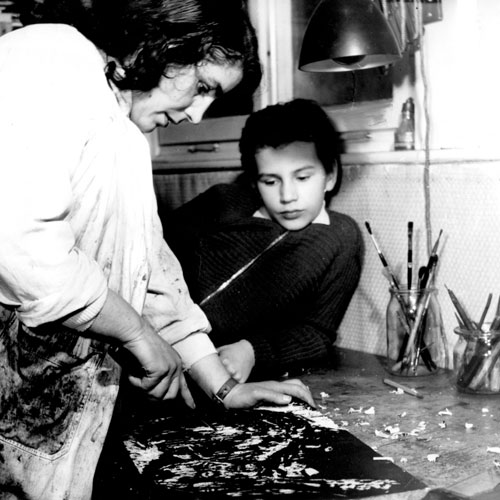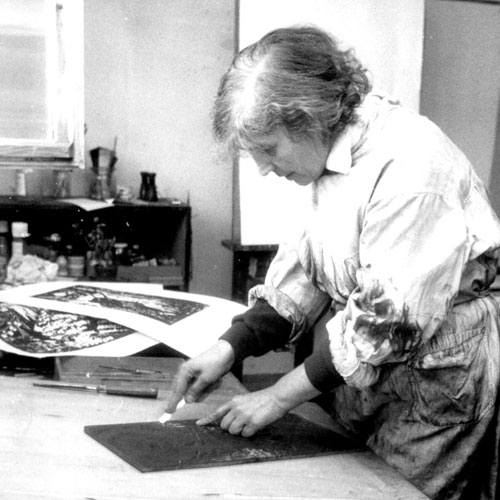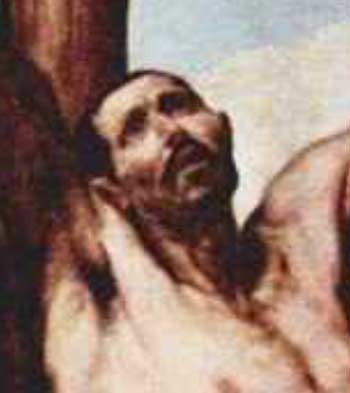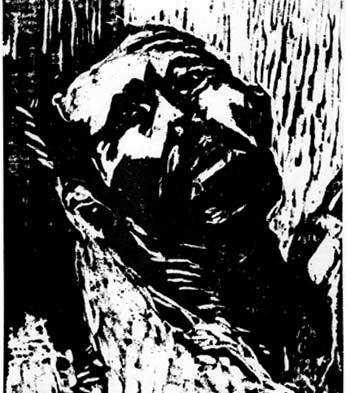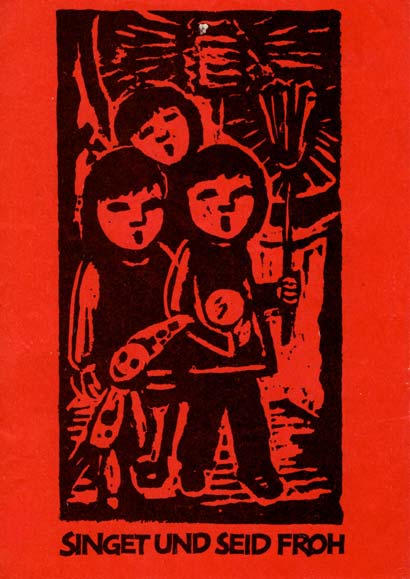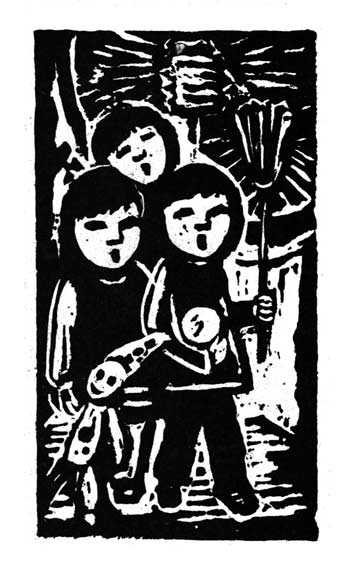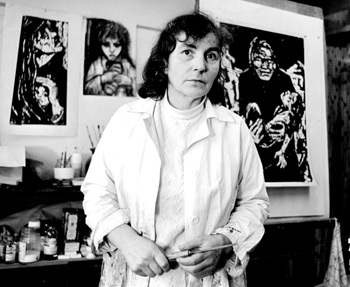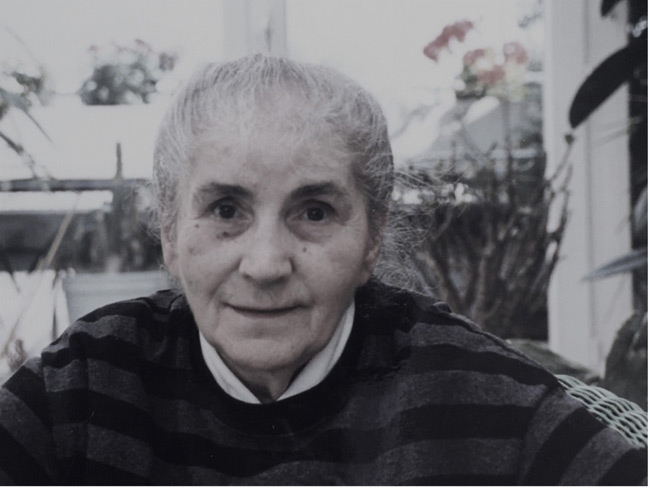
† 04/08/1998 in Berlin
Helena Scigala
Biographical Overview of Life and Work / Timeline
I. Batow (now Polish Batowo):
March 01, 1921
Born in the village of Batow/Soldin district (contemporary: Hinterpommern) as the first child of the landless migrant and farm worker couple (contemporary: harvesters) with Anna, née Hemer and Josef Scigala
II. Berlin-Pankow:
1927
Due to economic hardship, her parents placed their daughter in the Protestant orphanage SILOAH in Berlin-Pankow, run by deaconesses, after which she also attended elementary school
January 1933
Adolf Hitler becomes Chancellor, the Weimar Republic as a democracy ends, and Germany undergoes the transformation into a National Socialist dictatorship
September 1935
Through the so-called Nuremberg Laws, Jewish people are disenfranchised and degraded to second-class citizens
III. Havelland (Brandenburg) near Berlin - Caputh and Beelitz:
1936
Completion of elementary school at the age of 15
from 1936
Taking up a position as a housemaid in Caputh near Potsdam
September 1939
With the invasion of Poland, the German Reich triggers the Second World War
before May 1940
Most likely (currently only oral tradition from the biographee and strict taboo of the topic in her later life) brief deportation to the Ravensbrück women's concentration camp north of Berlin; due to her allegedly "non-Jewish" appearance, the 19-year-old was not assigned to forced labor in Ravensbrück, but conscripted to Beelitz.
from May 1940
Conscription as a ward girl in the complex of the Beelitz tuberculosis sanatoriums near Potsdam; a deployment with the risk of contracting droplet infection during nursing care
End of April 1945
Beelitz and the tuberculosis sanatoriums are surrounded by the Red Army; the nearby village of Ferch and the sanatoriums are retaken by the Wehrmacht
May 1945
End of the Second World War with German surrender
until May 1946
Continuation of work as a ward staff in the Beelitz tuberculosis sanatoriums; last residing at Street 45, Barracks 15
IV. Berlin-Pankow:
May 1946
Moving as a single woman to sublet with the single Ms. Reimann at Wisbyer Strasse 47 in Berlin-Pankow; in the police registration: adoption of the discriminatory Nazi classification as "stateless"
May to September 1946
The aspiring art student worked as a rubble woman and construction helper at her future place of study in Berlin-Weissensee
September 1946 to March 1949
April 1949 to Summer 1951
Study of painting and graphic arts at the Academy of Fine Arts in Berlin-Charlottenburg (West Berlin)
October 1949
The German Democratic Republic (GDR) is founded on the territory of the Soviet occupation zone with East Berlin as its capital
December 1954
Start of professional activity as a freelance graphic artist after approval of the application for admission to the Association of Visual Artists of Germany (VBKD 1950 to 1970) or the Association of Visual Artists of the GDR (VBK 1970 to 1990), membership of which was essential for both professional practice and participation in exhibitions
January 1957
Moving as a single mother with her almost 5-year-old son and for the first time with the status of main tenant; into a so-called studio apartment with 41 square meters of space, located on the 4th floor of a new building at Pestalozzistrasse 26 in Berlin-Pankow
before 1960
Turning to the complex technique of color woodcut, which already meant a high effort due to the required individual prints per color, and with the further development of which Helena Scigala established a unique selling point within the GDR artist community
August 1961
The GDR government consolidates the division of Germany with the "building of the Wall"
1960 to 1970
Most fruitful artistic creative years with highlights in terms of the production of works as well as in terms of presence within media and exhibitions; 1960: 3rd prize in the graphic competition of the Christian Democratic Union (CDU) party with a cycle about the Ravensbrück concentration camp and 1964: 1st prize in the subsequent competition with the cycle about the doctor and humanist Albert Schweitzer (contemporarily called "jungle doctor")
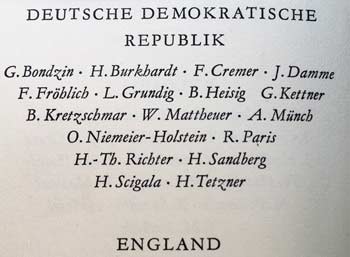
List of GDR artists in the 518-page exhibition catalog of the "IBA Leipzig 1965" (International Book Art Exhibition). Those mentioned here were selected from among the applicants by the GDR officials to represent the country in the competition "Graphics from Five Continents - Friendship Between Peoples" as part of the IBA.
Helena Scigala gained access to this exhibition with exhibitors from over 70 countries, which drew on great book fair traditions from the beginning of the 20th century, with the cycle about Albert Schweitzer. She was particularly proud of this fact and of the participation certificate awarded to her throughout her life.
1969-1972
Commission for what was then the world's longest wooden frieze (relief) as an object on the building of the Soviet specialty restaurant "Baikal" (see also the illustration under "Media Echo" 1981) in Berlin-Mitte; health damage to the right hand due to overuse; the work with folkloristic motifs had to be carried out twice through no fault of her own, as the wood for the first version proved unsuitable

1972-March 1973
Application of the stateless woman for GDR citizenship, after her likewise stateless son had reached the age of majority and was therefore no longer dependent on her status in this regard; a compulsory expert opinion from the VBK supports this request and the award is made by handing over the citizenship certificate on the artist's 52nd birthday
July 1973
At the age of 52, Helena Scigala succeeds in renting a two-room apartment at Pestalozzistrasse 26 in Berlin-Pankow in the same building and directly below the studio, which she continues to rent as a freelance artist living alone again after her son moved out
1974 and 1978
July 1976
Joining the Christian-oriented, socialist bloc party CDU, in whose environment and for whose institutions she had been artistically active since 1959
1977
State commission for the graphic design of the music school in Berlin-Pankow, after she had struggled for this through network contacts
March 1981
Reaching the regular retirement age for women; seamless continuation of her independent artistic activity: also because of the comparatively low pension and the resulting material concerns, as private correspondence proves
November 1989
Among other things, as a result of persistent mass protests by the GDR population, the Berlin Wall falls and German division can be abolished; the GDR, as a so-called accession territory, promptly adopts the Federal Republic's currency as well as its constitution, laws and social systems - with quite individual advantages and/or disruptions for its population
after 1990
Dominance of conflicts in the area of pensions and social security, of passivity in remedying defects on the part of the rental company, and of physical complaints in Helena Scigala's life
1997
Hospital stays
January 1998
Transfer as a patient to a nursing home of the Protestant Deaconess House Berlin-Teltow at the Berlin-Pankow location
April 08, 1998
Death at the age of 77 in Berlin-Pankow; in accordance with the deceased's wishes, burial takes place in a cemetery meadow in Berlin
From the condolence letter of Christian and Jutta Gaebler from April 22, 1998: "[She] has gone, just as she lived: quiet, friendly, modest. […] [She] certainly did not have an easy and comfortable life, and yet her face was never bitter, but always had something friendly, almost anxiously smiling."


